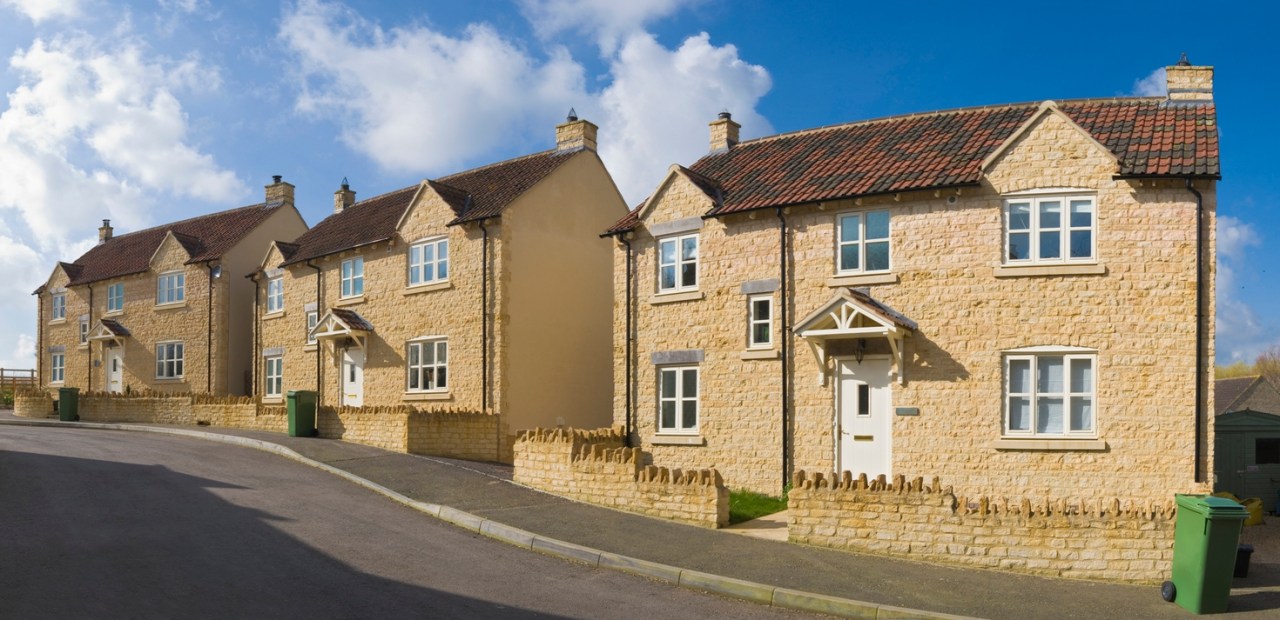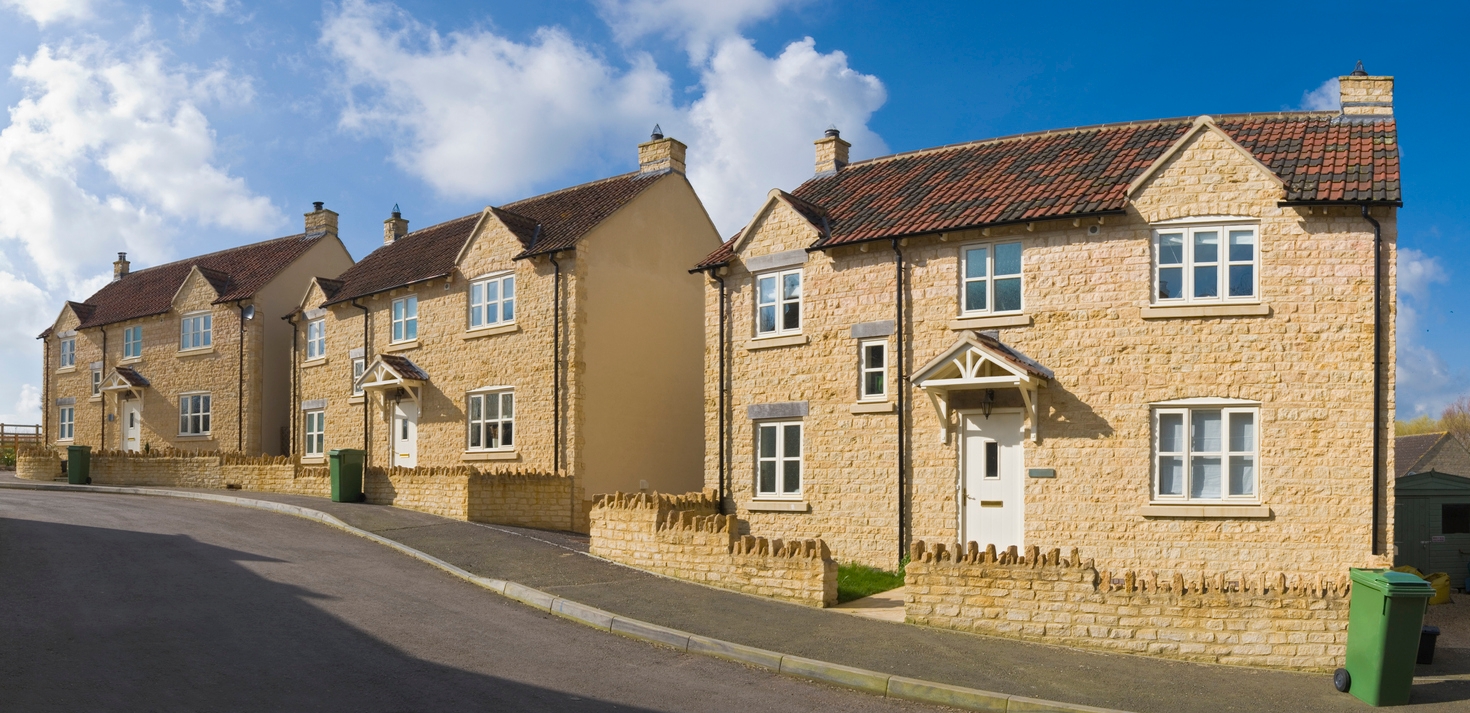If you’re looking to get onto the housing ladder, you’ll at least be considering a new build property. In England, according to the Office for National Statistics, there were nearly 245,000 new additional dwellings between April 2019 and March 2020. And according to building control figures, the number of homes completed was 49,470 between January and March 2021, with 46,010 starting on site. Supply is certainly on the up and there’s considerable pressure from national and local government to build more homes.
But are there things you should look out for? And what precautions can you take to ensure your property won’t be a nightmare?
On the plus side, a new build will never have been lived in before. And that means paint work, fixtures and fittings will all be fresh and unused. You may even have some choice as to what goes where. Just remember that if you do decide to change anything once you’re in, you’ll have paid for whatever you’re about to rip out.
Here are my top five tips to consider before buy:
Should you buy ‘off-plan’?
Buying a new build doesn’t mean buying off-plan. These are two very different ways of purchasing a property. If you are planning to buy ahead of the home’s completion, make sure you get good legal advice, ensure you understand what you are buying what will be delivered and when. Very often these properties can be late, so you don’t want to be left in limbo.
It’s safer to buy once a home is finished as you will know exactly what you are getting. The concern here is that all the good properties may have gone or been reserved before the site’s completion. Remember that there’s a difference between a show home and your home. Even new builds on the same site differ in outlook, finish quality, design, and layout. Whether you are buying ahead or waiting for completion, make sure you do your research on the specific property you are buying.
It’s also important to ascertain how much of the proposed development has been completed. If you’re moving in at the beginning of a phase, you could find yourself living on a building site for many years to come. Don’t underestimate how intrusive that will be on your lives. From large lorries turning up with deliveries, the hordes of building workers arriving and departing every day, making a lot of noise and mess while there.
Strike a bargain
Housebuilders will set prices, but it doesn’t mean there isn’t room for manoeuvre. If the developer is well respected and building in a strong local market, you won’t have much wiggle room. Always check prices in the area to see if there’s a builders’ premium attached.
Make sure you are happy with the quality and style of all the fixtures and fittings as you will often be paying for these in the price. Check the room sizes. Just because something is described as a bedroom, doesn’t mean it’s going to work for you or your possessions. New build homes often have smaller rooms and often incorporate built-in cupboards. You certainly do not want to be ripping out stuff when you move in.
Too many people consider that the price they paid is the market value of the property. It isn’t and whilst a scheme is being delivered, as a purchaser would you prefer a new build or second hand? A second-hand property is likely to trade at a 10 to 15 per cent discount to a newly delivered one unless there are features or micro locations that cannot be replicated. And then there’s the issue of supply and demand. Until a scheme settles down (unless it’s a one-off or small group of houses or flats) and a development establishes its own market, be prepared for the fact that your home may not be as easy to sell as it was to buy.
Be wary of leasehold properties
Freehold or leasehold? One of the great property scandals of our era continues to blight homeowners. Sometimes a well-maintained leasehold scheme can add value by providing common land and service maintenance, or shared facilities such as a gym, pool or security. Often, though, this ends up being a nasty cost that will come back to bite you later. If the property is leasehold, look for a ground rent and the provisions for uplift, the conditions of ownership or use and the controls imposed.
Even if the property is freehold, it’s useful to check who will have responsibility for any common spaces on the new build housing estate such as parks or greens. The ideal arrangement from a property owner’s perspective is for the council to take responsibility for the upkeep of these areas. If they will remain the responsibility of the developer, it’s wise to seek reassurances that these spaces will be regularly maintained in the longterm.
Read the small print
When you look to take on your property, you should have a chance to inspect what you’re buying. Be very clear that you understand what’s included and not included on your price and the guarantees. For example, new build homes do come with the NHBC warranty covering structural defects. The devil will be in the detail of the developer’s own warranty that should cover all aspects of your new home. On the downside, according to New Homes Review, 87 per cent of new-build homeowners reported snagging issues with their properties.
Here’s what I’d recommend you look out for:
- Look outside at the quality of finish. Shoddy workmanship outside could lead to problems inside.
- Don’t accept your home until the property is fully decorated to the standard agreed with the developer. And don’t be hoodwinked by the smell of fresh paint. I’d always recommend looking at all the corners in the rooms. Have skirtings and cornices been fitted properly? Are there gaps or cracks? Any sign of water ingress or paint discolouration? And remember that the first time you put the heating on, chances are cracks will appear, so are the builders scheduling in to come back and fill and redecorate if necessary? And don’t forget to have a budget for your own move-in costs. You’ll probably need curtains, carpets and blinds.
- Check the doors and windows open and shut properly. One of the early signs of a good (or bad) fit out is whether they do. Are there unseemly gaps? What about all the kitchen cupboards? And have they made sure everything is spotless. Look to the level of detail over mastic around the tiles and worktop fit-out too. Attention to detail is everything. If there are piles of dust in every cupboard, or unseemly joints in the units or skirting boards that have gaps between them and hard flooring, you could be in for a troublesome snagging session.
- Turn on every tap, flush every toilet and switch on every light. When you take delivery of a new home, everything is new. And chances are there will be some mistakes in installation. Wastepipes that haven’t been connected properly, water that doesn’t flow correctly and lights that aren’t wired in. Make sure you keep a list of everything that needs attention and ensure there’s a timetable for putting things right.
Of course, there is much to be said for the ease and convenience of a new build; often, you can save on energy costs whilst avoiding the premium prices associated with older ‘character’ properties. Just be aware that you are buying an asset whose value will depreciate markedly over the following years and do your research on the developer to avoid the endless snagging issues that too often go hand in hand with buying a brand new house.







Comments